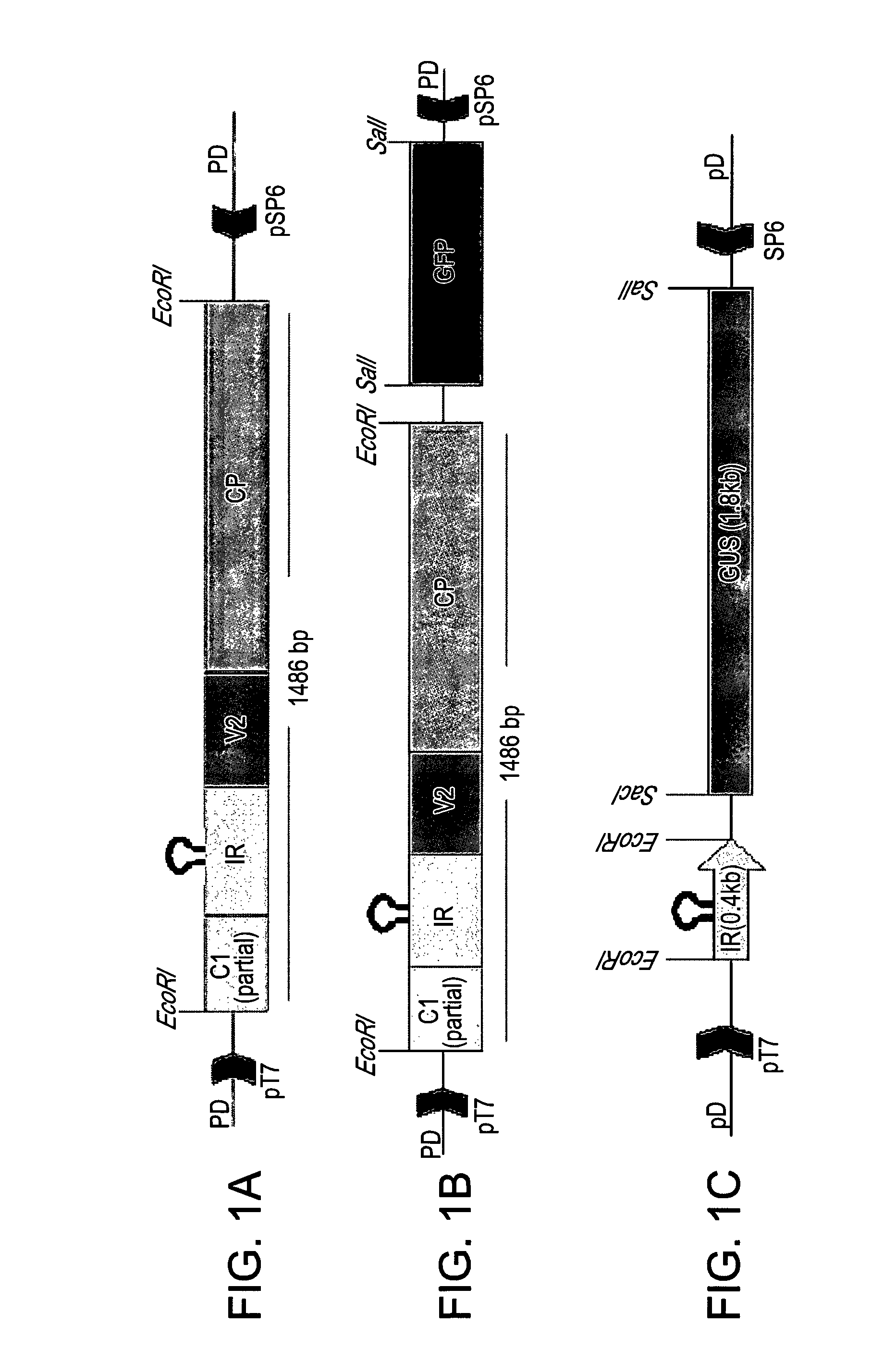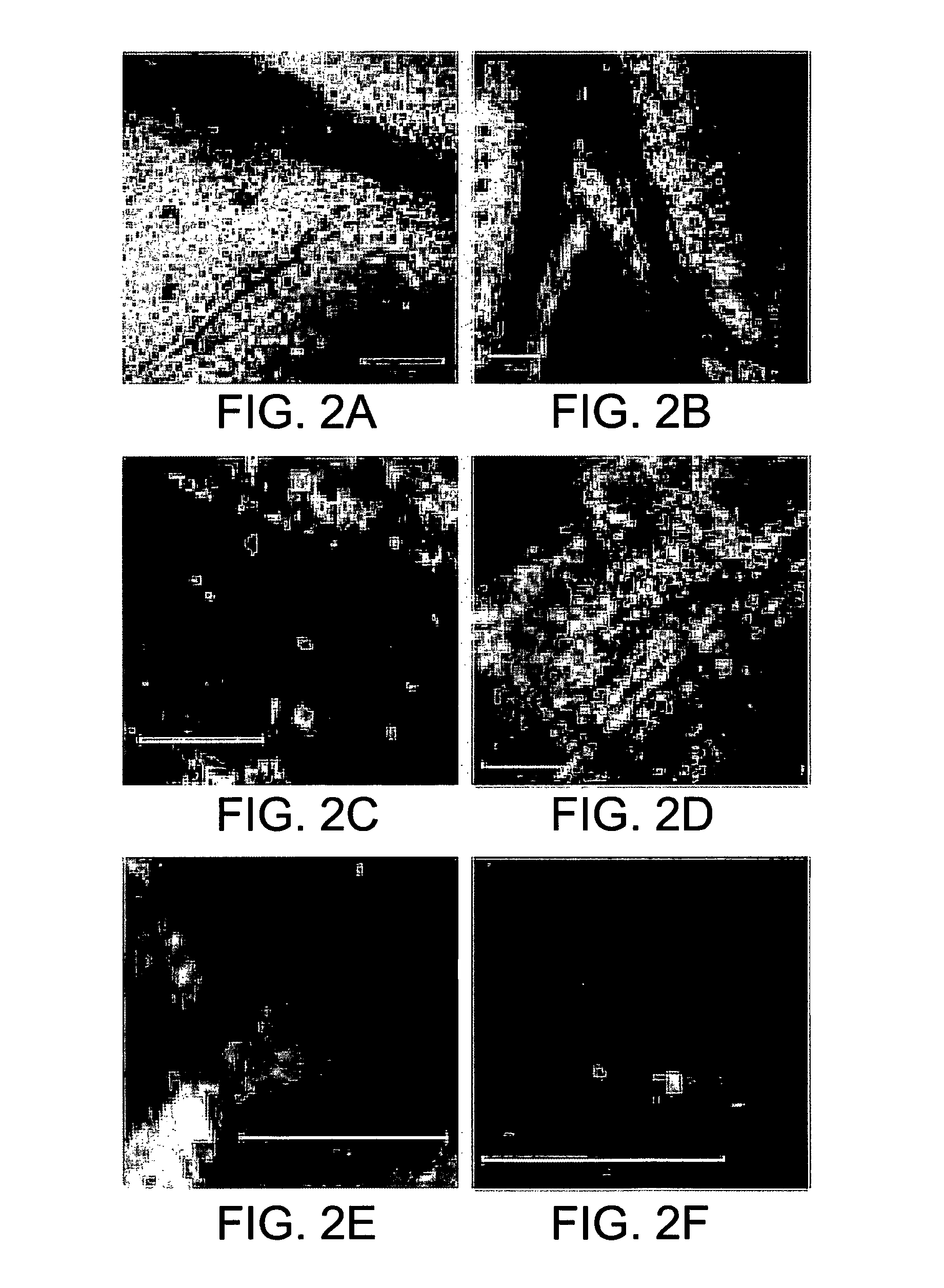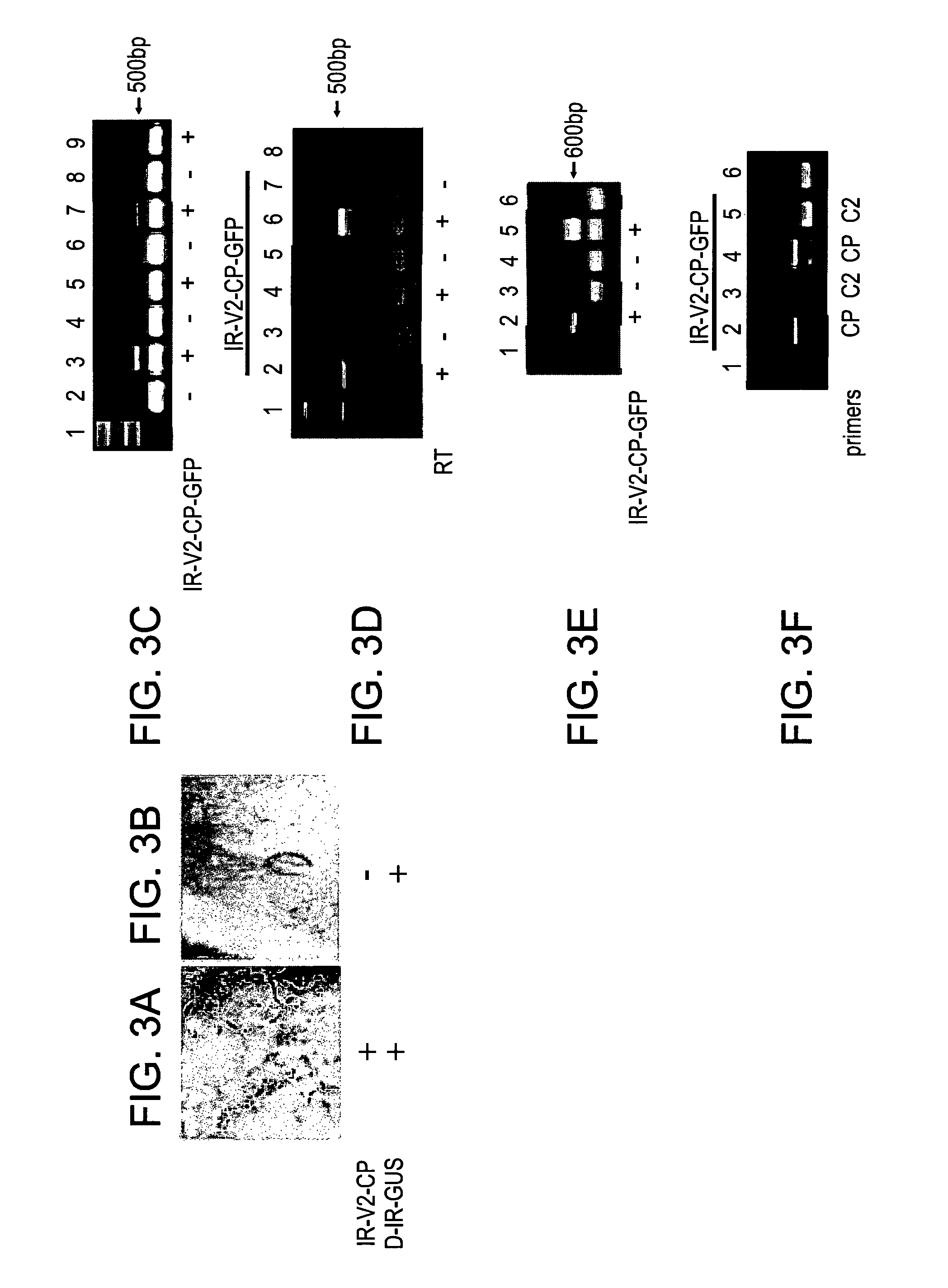Plant expression constructs comprising and uses thereof
a technology of plant expression and constructs, applied in the field of geminivirus constructs, can solve the problems of limited, unpredictable and transient, and copies of transgenes, and each of these delivery methods is not without limitations
- Summary
- Abstract
- Description
- Claims
- Application Information
AI Technical Summary
Benefits of technology
Problems solved by technology
Method used
Image
Examples
example 1
IR and the Sense Viral Genes (V1 and V2) are Sufficient for Stabilization, Movement and Spread of Artificial Satellites in Plant Tissues
[0172]IR-carrying satellites are activated to replicate, move and be expressed, either by a helper virus or by the mutated disarmed vector IL-60-BS (see WO2007 / 141790, incorporated herein by reference). The following example now shows that the sense-transcribed genes of TYLCV alone, under IR regulation, are sufficient for self-replication, movement and expression. This genomic segment can promote replication, movement and expression of IR-carrying satellites in trans as well.
[0173]GFP was fused to the 3′ end of CP in the IR-V2-CP construct (FIGS. 1A and 1B). Leaves remote from the point of injection were analyzed (FIGS. 2A-F). Upon injection into tomato plants, GFP fluorescence was observed mainly in the nuclei of phloem companion cells (FIGS. 2C-D). It was also observed at the cell periphery, suggesting movement across plasmodesmata (FIGS. 2A, E), ...
example 2
Delivery of IL-60-BS to Plants by Grafting
[0176]The results are illustrated in FIGS. 4 and 5. Specifically, these Figures illustrate that both IR-GUS (FIG. 4) and IR-PRN (FIG. 5) were transferred from the scion to the rootstock where they replicated and spread.
example 3
Delivery of IL-60-BS by Through the Roots
[0177]FIG. 6 demonstrates that IR-GUS was transferred through the roots and replicated and spread in the plants. The same result was achieved when other IR vectors (IR-GFP and IR-PRN) were transferred through the roots of additional plants including tomato, tobacco, grapevine and periwinkle (data not shown).
[0178]Although the invention has been described in conjunction with specific embodiments thereof, it is evident that many alternatives, modifications and variations will be apparent to those skilled in the art. Accordingly, it is intended to embrace all such alternatives, modifications and variations that fall within the spirit and broad scope of the appended claims.
[0179]All publications, patents and patent applications mentioned in this specification are herein incorporated in their entirety by reference into the specification, to the same extent as if each individual publication, patent or patent application was specifically and individ...
PUM
| Property | Measurement | Unit |
|---|---|---|
| time | aaaaa | aaaaa |
| time | aaaaa | aaaaa |
| transmission | aaaaa | aaaaa |
Abstract
Description
Claims
Application Information
 Login to View More
Login to View More - R&D
- Intellectual Property
- Life Sciences
- Materials
- Tech Scout
- Unparalleled Data Quality
- Higher Quality Content
- 60% Fewer Hallucinations
Browse by: Latest US Patents, China's latest patents, Technical Efficacy Thesaurus, Application Domain, Technology Topic, Popular Technical Reports.
© 2025 PatSnap. All rights reserved.Legal|Privacy policy|Modern Slavery Act Transparency Statement|Sitemap|About US| Contact US: help@patsnap.com



